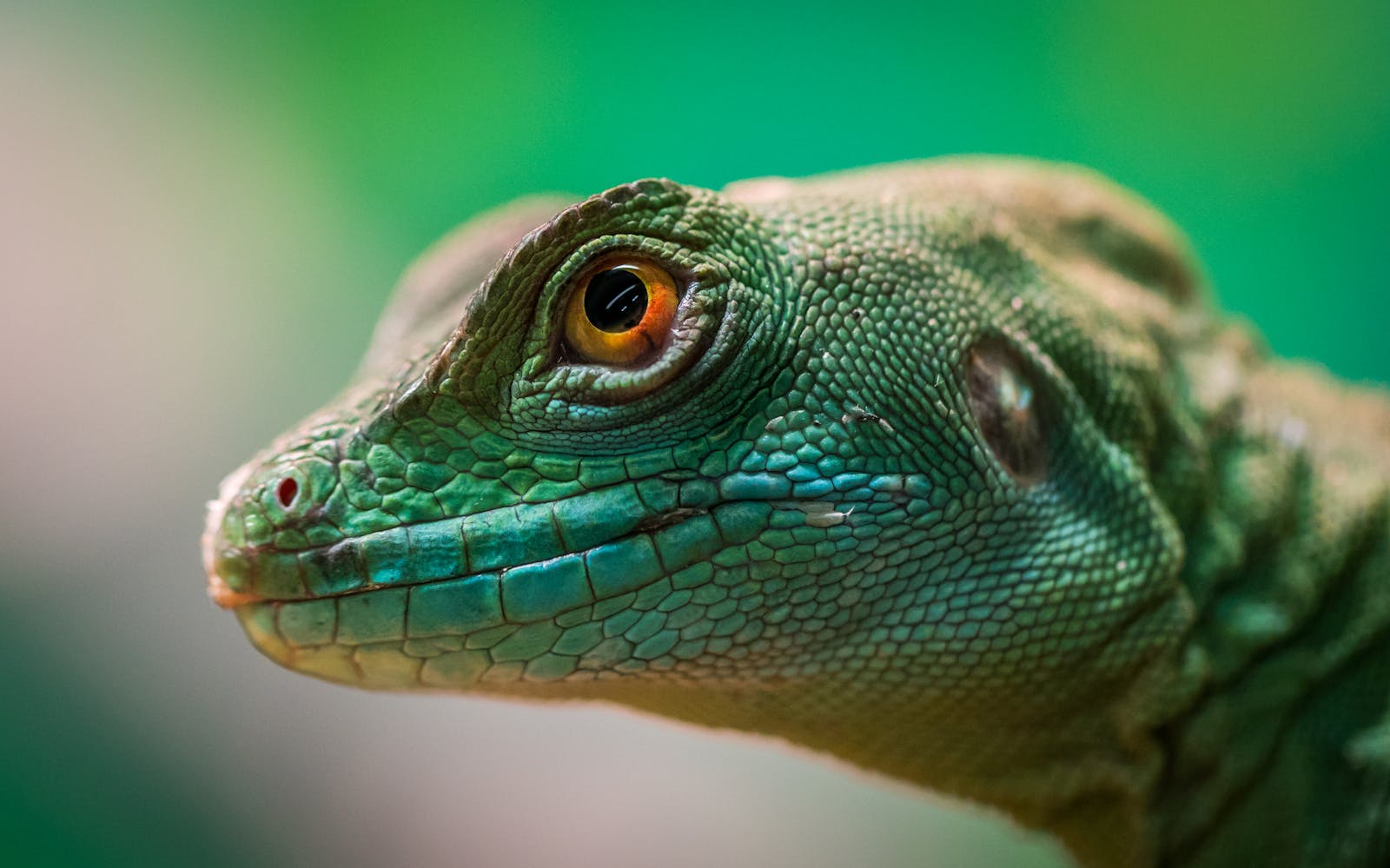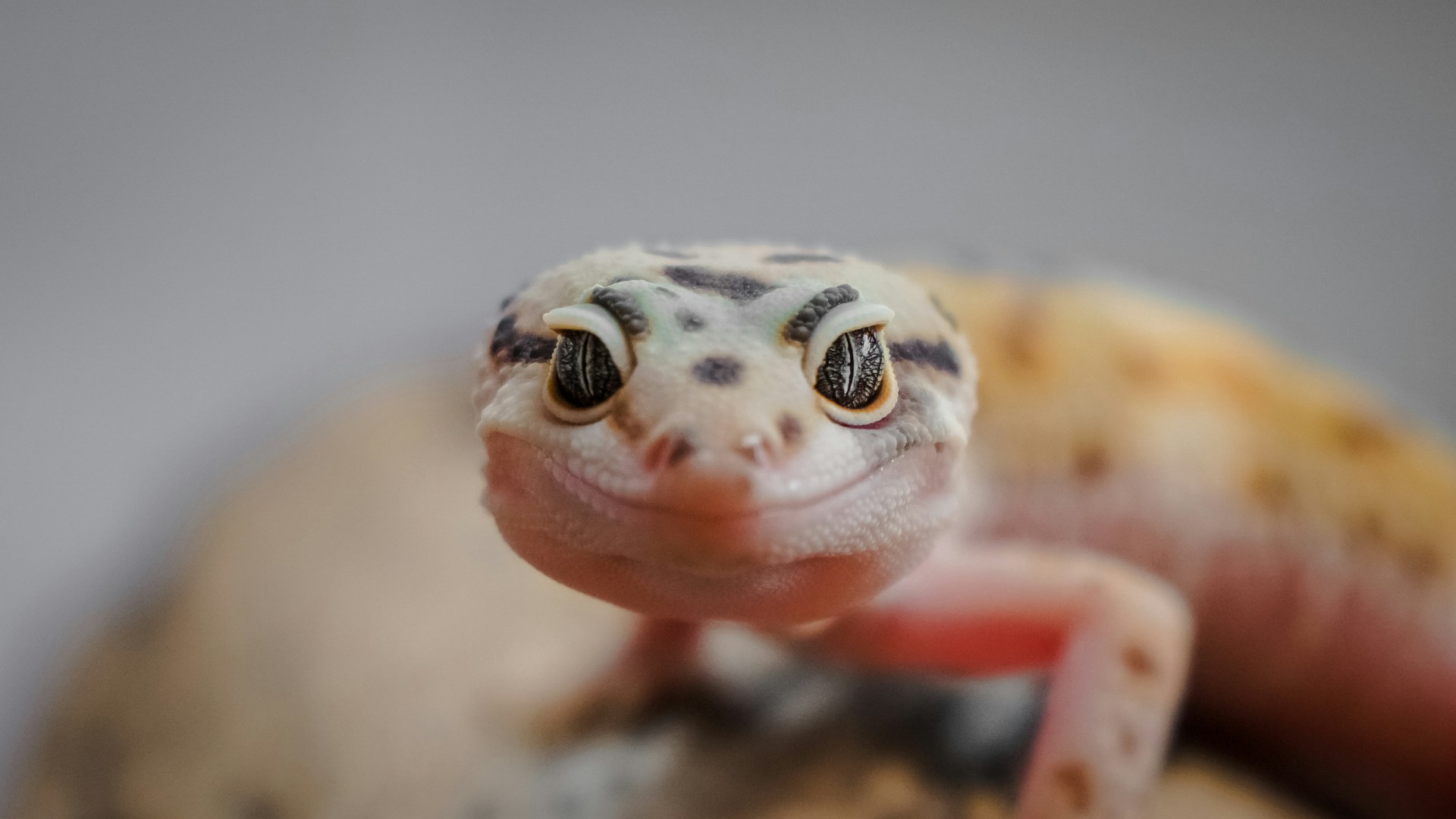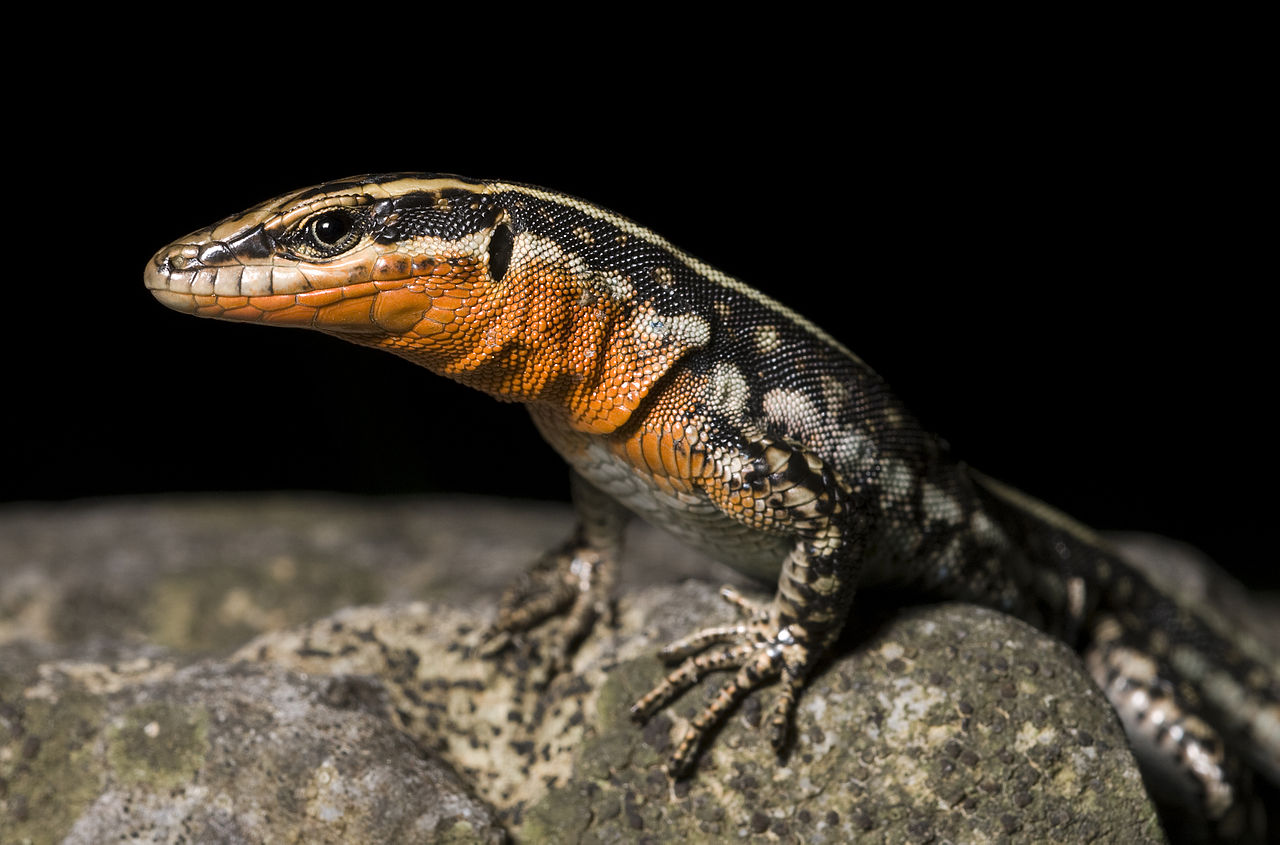When ecosystems face an unwelcome reptilian invasion, the consequences can be devastating for native wildlife, agriculture, and even human infrastructure. Invasive lizard species have become a global concern as international travel and the exotic pet trade have facilitated their introduction to non-native environments. These adaptable reptiles can reproduce rapidly, outcompete native species, and wreak ecological havoc in their new territories. From the predatory brown tree snake to the destructive Nile monitor, invasive lizards pose significant challenges to conservation efforts worldwide. This article explores the most problematic invasive lizard species, examining their origins, impacts, and the ongoing battle to control their spread.
The Brown Anole (Anolis sagrei)

Native to Cuba and the Bahamas, the brown anole has established thriving populations throughout the southeastern United States, Hawaii, and even parts of Asia. These small but prolific lizards have displayed remarkable adaptability, quickly colonizing urban and suburban environments where they feed on native insects and smaller reptiles. Research has documented the brown anole’s negative impact on native green anole populations, which have been forced to retreat to higher perches in trees as the invaders dominate the ground and lower vegetation. Their success stems from their ability to reproduce rapidly, with females capable of laying one egg every week during breeding season, allowing populations to explode within just a few generations. Additionally, brown anoles demonstrate behavioral flexibility and can tolerate a wider range of environmental conditions than many native species.
Common House Gecko (Hemidactylus frenatus)
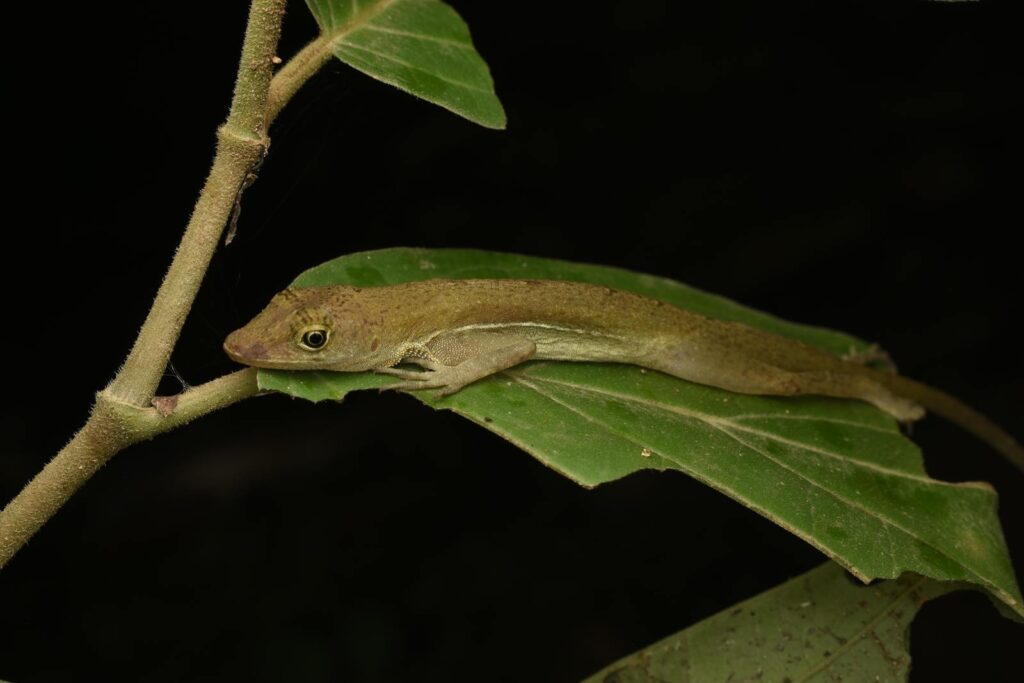
The common house gecko, also known as the Asian house gecko, has achieved a nearly global distribution through its association with human habitations. Originally from Southeast Asia, these vocal nocturnal geckos have hitchhiked aboard cargo ships and planes to establish populations on every continent except Antarctica. Their success comes from their ability to thrive in urban environments, where they hunt insects attracted to artificial lights and find abundant shelter in building crevices. House geckos outcompete native gecko species through their aggressive behavior, efficient hunting strategies, and incredible reproductive potential, with females producing multiple clutches of eggs annually. Their presence has been linked to declining populations of native gecko species in places like Australia, where they displace indigenous species through direct competition for food and habitat.
Green Iguana (Iguana iguana)

The green iguana, native to Central and South America, has become a destructive invasive species in Florida, Hawaii, and several Caribbean islands following releases by pet owners. These large herbivores cause extensive damage to landscaping, erode canal banks with their burrows, and even interfere with critical infrastructure by nesting in levees and airport runways. In Florida alone, millions of dollars are spent annually addressing iguana-related damage to seawalls, sidewalks, and other structures undermined by their extensive burrowing activities. Their prolific breeding—with females laying up to 70 eggs annually—has allowed populations to explode in favorable climates where natural predators are absent. Furthermore, green iguanas carry Salmonella bacteria, presenting a public health concern in areas with dense iguana populations.
Burmese Python (Python bivittatus)

While technically not a lizard but a snake, the Burmese python deserves mention as one of the most devastating reptilian invaders worldwide. These massive constrictors, capable of reaching over 20 feet in length, have established a breeding population in Florida’s Everglades, where they have decimated native mammal populations by up to 99% in some areas. Their voracious appetite and ability to consume prey as large as alligators and deer make them apex predators in their invaded ecosystem. Female pythons can lay 50-100 eggs annually, and the subtropical Florida climate provides ideal conditions for year-round survival and reproduction. Most troublingly, despite millions spent on eradication efforts, including python hunting competitions and specialized detection dogs, the Burmese python population continues to expand its range throughout southern Florida.
Nile Monitor (Varanus niloticus)

The Nile monitor, Africa’s largest lizard species, has established breeding populations in Florida where it poses a serious threat to native wildlife. These intelligent, semi-aquatic predators grow up to seven feet long and possess remarkable strength, agility, and swimming ability, allowing them to access a variety of habitats. Their omnivorous diet includes eggs, birds, small mammals, reptiles, amphibians, fish, and invertebrates, making them potential predators of many endangered species, particularly burrowing owls and sea turtle eggs. Nile monitors exhibit aggressive behavior when threatened and can deliver painful bites with their sharp teeth and strong jaws. Their success as invaders stems from their adaptability, lack of natural predators in Florida, and prolific breeding, with females capable of laying 50+ eggs annually.
Argentine Black and White Tegu (Salvator merianae)

The Argentine black and white tegu has emerged as one of the most problematic invasive reptiles in the southeastern United States, with established populations in Florida, Georgia, South Carolina, and Alabama. These large, intelligent lizards reach up to four feet in length and possess omnivorous appetites that include fruits, vegetables, insects, small animals, and eggs of ground-nesting birds and reptiles. Wildlife biologists have documented tegus consuming eggs of the threatened American alligator and gopher tortoise, raising serious conservation concerns. Unlike many reptiles, tegus possess relatively high intelligence and can thrive in various habitats, from forests and savannas to agricultural areas and suburban environments. Their physiological ability to operate at lower body temperatures than most lizards allows them to remain active in cooler weather, extending their potential range further north than many other invasive reptile species.
Tokay Gecko (Gekko gecko)

The Tokay gecko, recognizable by its bluish-gray body covered with orange or red spots and its distinctive loud “to-kay” call, has established invasive populations in Florida, Hawaii, and several Caribbean islands. Native to Southeast Asia, these large, aggressive geckos can reach nearly 16 inches in length and are known for their painful bite, which they readily deliver when handled or threatened. Their invasion success stems from their adaptability to urban environments, ability to consume a wide variety of prey including smaller lizards, and remarkable reproductive capacity, with females laying multiple clutches annually. In Florida, Tokay geckos compete with native reptiles for food and habitat resources while facing few natural predators in their introduced range. Additionally, as nocturnal hunters, they often go undetected until populations are firmly established, making early intervention challenging.
Jackson’s Chameleon (Trioceros jacksonii)

Jackson’s chameleons, with their distinctive three horns and color-changing capabilities, have established invasive populations in Hawaii after being released by pet owners in the 1970s. These East African natives have had devastating effects on Hawaii’s endemic insects and snails, many of which evolved without natural predators and lack defenses against these efficient hunters. Their success as invaders comes from their adaptability to Hawaii’s climate, which closely resembles their native Kenyan highlands, and their live-bearing reproductive strategy, which gives their young a survival advantage over egg-laying species. Female Jackson’s chameleons produce 8-30 live young annually, allowing populations to increase rapidly in favorable conditions. Despite their relatively slow movement, their specialized hunting techniques using their projectile tongues make them efficient predators of Hawaii’s vulnerable native invertebrates.
Knight Anole (Anolis equestris)

The knight anole, Cuba’s largest anole species, has established invasive populations in Florida where it competes with native wildlife and preys on smaller lizards, birds, and large insects. These bright green lizards can grow up to 20 inches long and possess powerful jaws capable of delivering a painful bite when threatened. Their arboreal lifestyle and excellent camouflage make detection difficult until populations are well-established, complicating control efforts. Knight anoles demonstrate remarkable adaptability to urban environments, thriving in suburban gardens and parks where ornamental plantings provide ideal habitat for both shelter and hunting. Their diet flexibility allows them to exploit whatever food sources are available, from small vertebrates to fruits and flowers, giving them a competitive edge over more specialized native species.
Boa Constrictor (Boa constrictor)

While technically not a lizard but a snake, the boa constrictor has become an established invasive species in Puerto Rico and parts of Florida following escapes and releases from the pet trade. These large constrictors, which can reach lengths of 13 feet, prey on native birds, mammals, and reptiles, with particularly devastating effects on ground-nesting species. In Puerto Rico, boas have contributed to the decline of the endangered Puerto Rican parrot by preying on nestlings and adults. Their excellent camouflage and primarily nocturnal hunting behavior make detection difficult until populations are firmly established. Female boas give birth to 10-65 live young every 2-3 years, allowing populations to grow rapidly in suitable habitat. Even more concerning is their ability to reproduce through parthenogenesis (virgin birth) in some cases, meaning a single female can potentially establish a new population.
Agama Lizard (Agama agama)

The African rainbow lizard or common agama has established invasive populations in Florida, where their bright coloration and conspicuous basking behavior make them among the most visible invasive reptiles. Males display vibrant breeding colors of orange or red heads, blue bodies, and black tails, earning them the nickname “rainbow lizards.” Their diet flexibility allows them to consume insects, small vertebrates, flowers, and plant material, potentially competing with native lizards for food resources. Agamas thrive in disturbed and urban environments, using buildings, walls, and sidewalks as basking sites and shelter. Their rapid reproduction—with females laying multiple clutches of 5-7 eggs annually—has enabled quick population growth and range expansion throughout southern Florida since their introduction in the early 1990s.
Asian Water Monitor (Varanus salvator)

The Asian water monitor, one of the world’s largest lizards capable of growing up to 10 feet long, has established a breeding population in southern Florida. These semi-aquatic predators possess remarkable swimming abilities and can remain submerged for up to 30 minutes while hunting aquatic prey. Their diet includes virtually anything they can overpower, from fish and crabs to birds, mammals, and carrion, making them potential threats to many native Florida species including wading birds and small mammals. Female water monitors lay 15-40 eggs annually, and the warm Florida climate provides ideal incubation conditions year-round. Their intelligence and adaptability to human-altered environments make them particularly challenging invasive species to control once established, as they quickly learn to avoid traps and can flee into water when pursued.
Prevention and Control Strategies

Controlling invasive lizard species requires a multifaceted approach combining prevention, early detection, rapid response, and ongoing management. The most effective strategy remains prevention through strict regulations on the exotic pet trade, comprehensive port inspections, and public education about the ecological risks of releasing unwanted pets. For established populations, control methods include trapping, hunting programs that offer bounties, detector dogs specially trained to locate specific species, and in some cases, chemical control methods when appropriate. Novel technologies such as environmental DNA (eDNA) sampling allow scientists to detect invasive species from water or soil samples, potentially identifying new invasions before they become established. Additionally, citizen science programs have proven valuable for monitoring and reporting invasive lizard sightings, creating an early warning network that spans urban and natural areas.
Conclusion
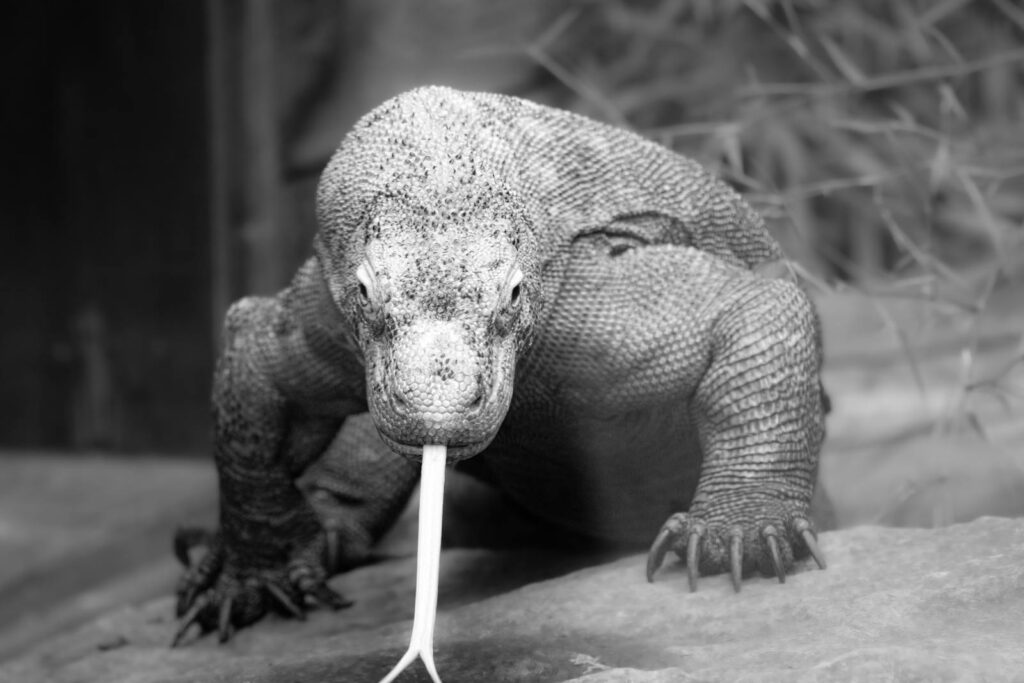
Invasive lizard species represent one of the most challenging aspects of modern conservation biology. Their adaptability, reproductive capacity, and ability to thrive in human-modified landscapes make them particularly successful invaders. The ecological and economic impacts of these species—from the predatory Nile monitor to the infrastructure-damaging green iguana—highlight the importance of prevention and early intervention. As climate change potentially expands suitable habitat for many of these species, the need for coordinated international efforts to prevent new introductions becomes increasingly urgent. While complete eradication of established invasive lizard populations often proves nearly impossible, targeted management can reduce their impacts and protect vulnerable native species from these unwelcome reptilian invaders.

